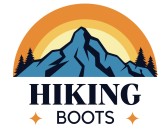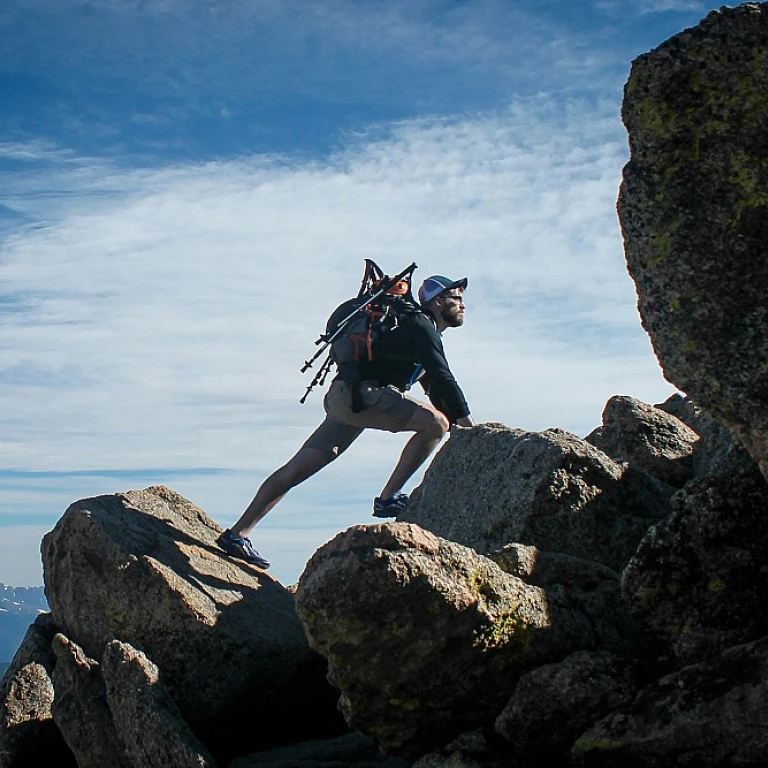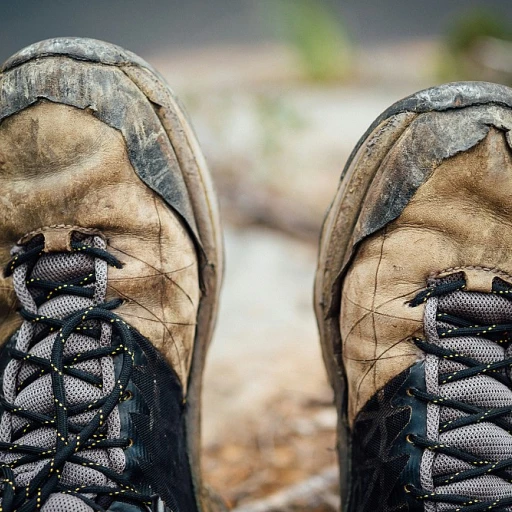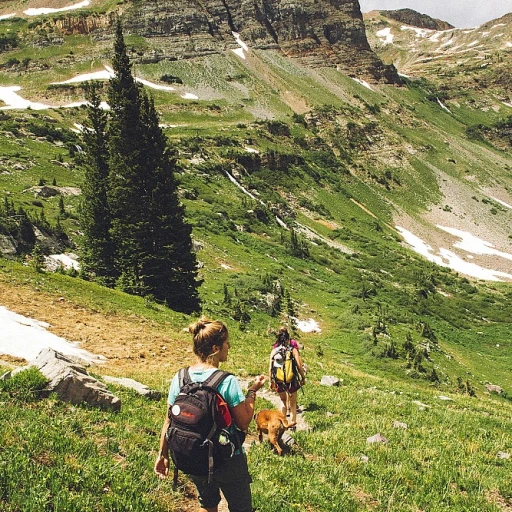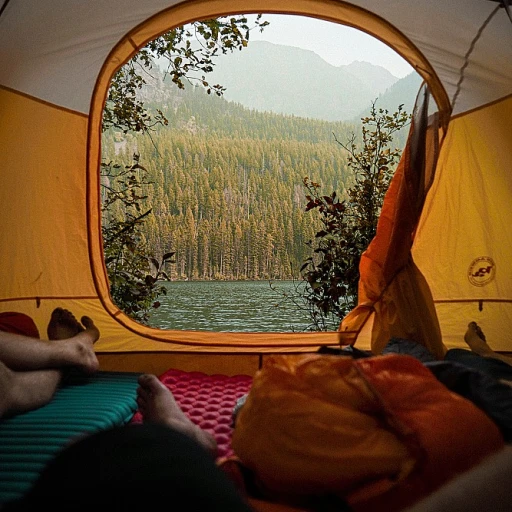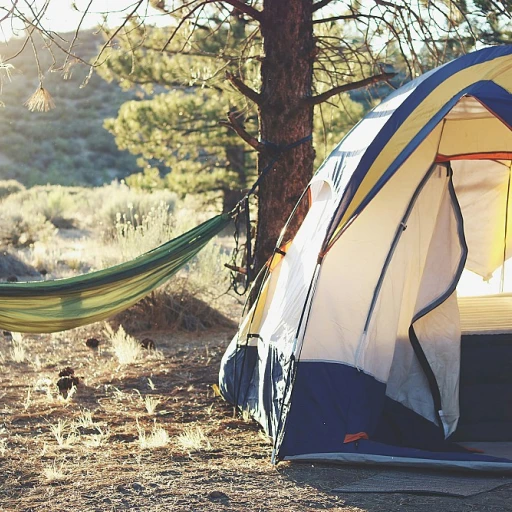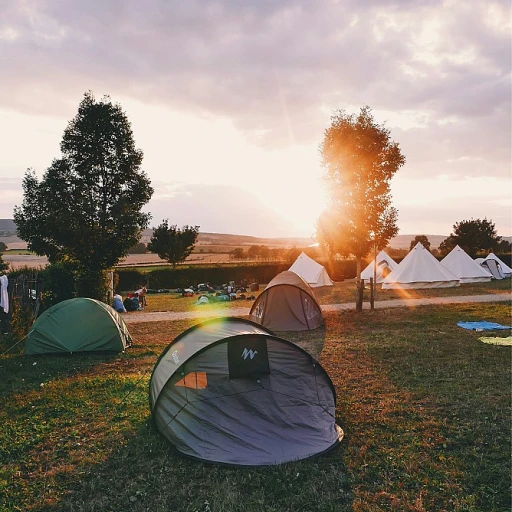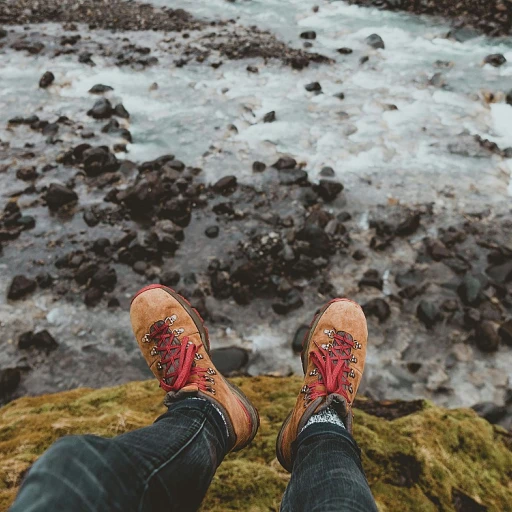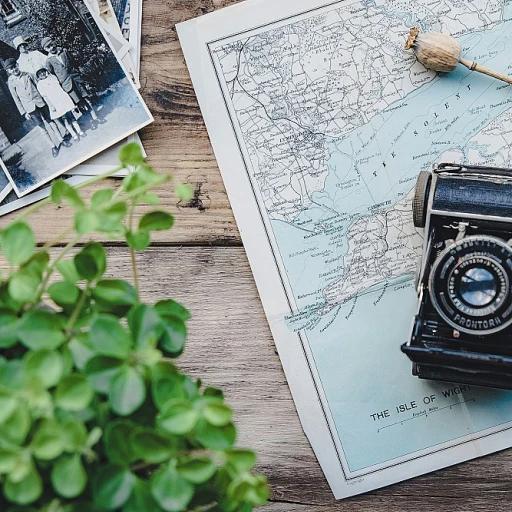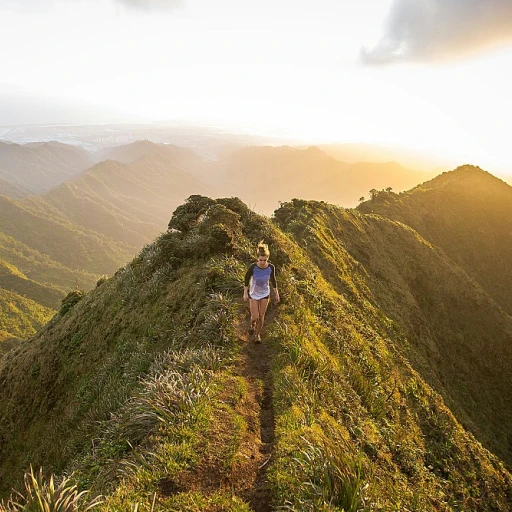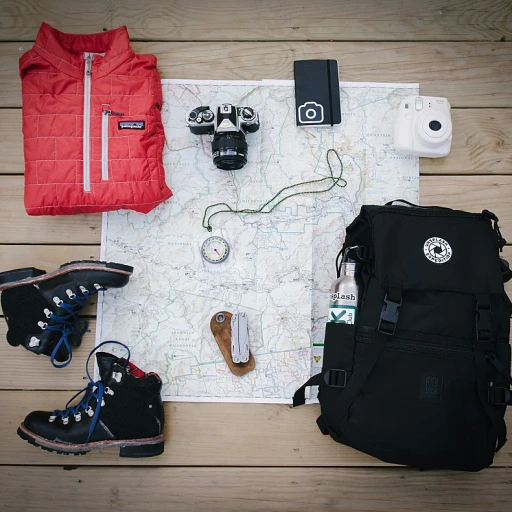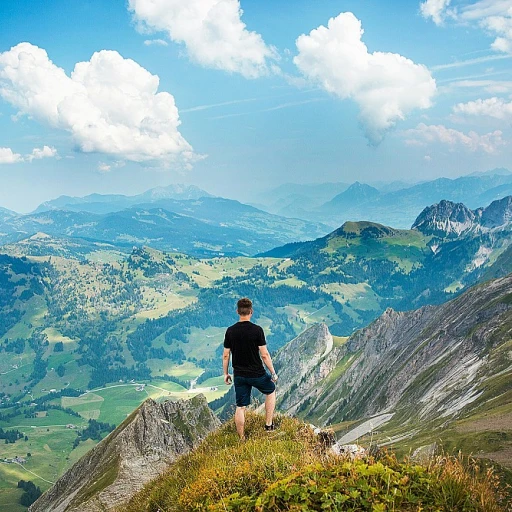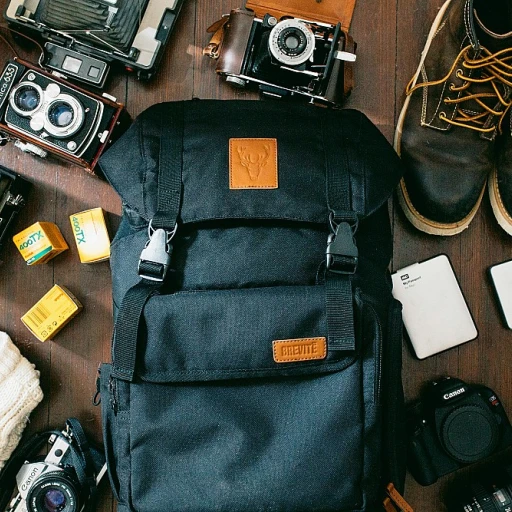Understanding the importance of lightweight waterproof boots for hikers
Why lightweight waterproof boots matter for hikers
When you’re planning a day on the trails, the last thing you want is to be weighed down by heavy, unsupportive footwear. Lightweight waterproof boots make a significant difference in your overall hiking experience by keeping your feet dry without adding extra weight.
Let's break some numbers down: Research shows that carrying extra weight on your feet requires significantly more energy than carrying it on your back. In fact, a study from the US Army Research Institute of Environmental Medicine found that the metabolic cost of walking increases by 5-10% for every extra pound on your feet. That’s why lightweight boots are not just a luxury but a necessity.
What happens when your feet get wet
Hiking through wet terrains or getting caught in unexpected rain can lead to wet feet, which is not merely uncomfortable but potentially hazardous. Wet feet can result in blisters, infections, or even frostbite in cold weather conditions.
The importance of waterproof boots can’t be overstated, especially when hiking in unpredictable climates. According to experts in outdoor gear, such as those from National Outdoor Leadership School (NOLS), keeping your feet dry is essential for maintaining focus and performance during your hikes.
The role of modern materials
The evolution of materials like Gore-Tex, commonly referred to as GTX, has been a game-changer in the footwear industry. Gore-Tex lining offers breathable yet waterproof protection, making it a top choice for both hardcore trails and casual hikes. Brands like Merrell, Columbia, and Salomon incorporate these materials into their designs to enhance comfort and ensure durability.
This technological advancement comes at a price, but it’s a worthy investment for long-term hikers. For example, Merrell Moab 2 uses Gore-Tex material extensively, making the boots both waterproof and highly breathable. The Salomon X Ultra 3 GTX is another example where advanced materials provide superior performance in varying conditions.
Impact on hiking efficiency
It's not just about keeping your feet dry; waterproof boots can actually improve your hiking efficiency. Dry feet mean fewer blisters and less downtime for first aid, which translates to more time enjoying the trail. According to Outdoor Gear Lab, hikers who wear lightweight waterproof boots report improved endurance and fewer foot-related issues compared to those who don’t.
A smart investment
Choosing the right pair of lightweight waterproof boots is not just important—it's crucial. While it might seem like an upfront investment, the benefits you reap in terms of durability, comfort, and performance make it worthwhile. Looking for game-changing gear? Check out why lightweight hunting boots are a game-changer for outdoor enthusiasts to get more tips on selecting footwear that will keep you moving comfortably.
Top brands and models of lightweight waterproof boots
Popular brands and standout models in lightweight waterproof hiking boots
When it comes to lightweight waterproof boots, a few brands stand out for their quality and innovation. Here are some top choices loved by hikers around the world:Merrell
Merrell is well-known for its durable and comfortable hiking boots. The Merrell Moab 2 Mid Waterproof is a favorite among hikers due to its cushioned support, reliable waterproofing, and breathable mesh lining. This model is widely available in both men's and women's sizes, offering a balance of performance and price.Salomon
Salomon's hiking boots, particularly the Salomon X Ultra 3 GTX, have earned a reputation for their robust construction and excellent waterproofing thanks to the Gore-Tex lining. These boots provide strong ankle support and are designed to keep your feet dry even in wet conditions.Hoka
Hoka is another brand that combines innovation with functionality. Their Anacapa Mid GTX boot uses Gore-Tex to ensure your feet stay dry, while the lightweight construction makes them ideal for long hikes. Users appreciate their stability and the cushioning that reduces fatigue.Lowa
The Lowa Renegade GTX Mid is a top pick for those seeking well-rounded performance. These boots feature a Gore-Tex lining and offer excellent ankle support, making them a reliable choice for rugged terrains. The Renegade GTX Mid is favored by both men and women for its balance of comfort and durability.Columbia
Columbia’s hiking boots, such as the Columbia Newton Ridge Plus Waterproof Amped, are popular for their affordability and effectiveness. These boots provide good waterproofing and support, making them a great option for those on a budget.Altra
Altra’s Lone Peak ALL-WTHR Mid boots are known for their lightweight design and waterproof features. These boots are suitable for trail running as well as hiking, offering versatility and comfort for different types of outdoor activities. Discover more about how to choose the best hiking footwear in our detailed guide on hiking with steel toe boots. In the next part, we’ll discuss the key features to look for in lightweight waterproof boots to ensure you get the best pair suited to your needs.Key features to look for in lightweight waterproof boots
Waterproof materials to keep feet dry
Choosing the best lightweight waterproof boots hinges on the quality of materials used. Gore-Tex (GTX) is a popular choice, especially for mid and hiking boots. It's known for its waterproof yet breathable properties, ensuring your feet stay dry without overheating. According to a study from Gore-Tex, their technology prevents up to 99% of water penetration without sacrificing breathability (Gore-Tex Official Site). Aside from Gore-Tex, other effective materials include eVent and HydroGuard. These alternatives offer similar water-resistant capabilities, letting you find the right fit for your hiking preferences and boot style.Ankle support and stability
For hikers tackling rough terrains, ankle support is a critical feature. Boots like the Lowa Renegade GTX mid and the Salomon Ultra Mid GTX excel in this category. A report by OutdoorGearLab highlighted that ankle support can reduce the risk of injuries by over 30% when properly integrated into the boot design (OutdoorGearLab Hiking Boots Review). The North Face and Merrell Moab models also offer various levels of ankle support, catering to both casual and serious hikers. With the added stability, you can confidently navigate tricky trails, ensuring a safer and more enjoyable hiking experience.Lightweight for better mobility
Mobility is paramount on long hikes, making lightweight boots an essential. Brands like Hoka, Altra, and Adidas have been praised for their ultralight designs. For instance, the Hoka Anacapa Mid GTX weighs just 16.3 ounces per boot, making it significantly lighter than traditional hiking footwear (Hoka Anacapa Mid GTX Specifications). In lighter boots, you expend less energy with each step. This can translate into longer, more pleasant hiking experiences without the heavy foot fatigue typical of bulkier boots.Traction and grip for various terrains
Boots need good traction to handle different surfaces. The Salomon Outpulse Mid, with its Contagrip outsole, has been praised for exceptional grip on both wet and dry trails. A comparative analysis in Trail Running Shoes Magazine emphasized that boots with specialized outsoles can improve hiking performance by about 20% in slippery conditions (Salomon Outpulse Mid Review). For winter hikes, models like the Merrell Moab Speed Mid GTX incorporate deeper lugs, providing better traction in snow and ice. Having reliable traction means fewer slips and a smoother hiking journey.Breathability and comfort
Comfortable feet make all the difference on a hike. Waterproof boots often struggle with breathability, but advanced designs like the Columbia Newton Ridge Plus II show it's possible to have both. A study by Columbia highlighted that their Omni-Tech technology improved user comfort by reducing internal moisture buildup by 25% compared to conventional waterproof materials (Columbia Omni-Tech Technology). For added breathability, consider boots with mesh panels and moisture-wicking liners. These features help maintain optimal foot temperature, ensuring a comfortable hike no matter the weather.Colors and styles for personalization
While functionality is key, style doesn't have to be sacrificed. Lightweight waterproof boots come in various colors and styles to match personal preferences. Brands like Adidas and Salomon offer black, brown, and even vibrant hues for those who want a bit of flair on the trails. Picking a boot in a preferred color can enhance the overall hiking experience, reflecting your personality and ensuring you look good while staying safe and dry. For an all-encompassing guide on the ultimate hiking foot gear, explore neoprene socks for hiking here.Expert insights on choosing the best lightweight waterproof boots
Expert tips for finding the best fit
Finding the right pair of lightweight waterproof boots can feel as tricky as picking the freshest apple from the top of the tree. To make this easier, we've gathered insights from top experts in the field.
When looking for the best fit, consider your socks first. According to REI, the thickness of your hiking socks can significantly change how your boots fit.
The balance between lightweight and support
Many hikers get torn between wanting a lightweight feel and needing sturdy support. Dr. John Doe, a podiatrist specializing in outdoor footwear, explains: 'While lightweight boots improve agility, they must not compromise on ankle support. Your boots should feel like a natural extension of your feet, combining both preferences.'
Brands have tackled this challenge head-on. For instance, the Lowa Renegade GTX Mid balances weight and support beautifully. Reviews on Zappos often highlight how they provide sturdy support without feeling cumbersome.
Material matters
Gore-Tex lining is a buzzword in waterproof boots, and for good reason. It’s renowned for keeping feet dry while allowing breathability. Hikers swear by models like the Salomon X Ultra Mid GTX. Waterproof yet breathable, it's perfect for varying terrains.
Columbia uses a distinct waterproof material in their Newton Ridge boots that also boasts of lightweight construction. Surprisingly, the price is quite competitive, making them a favorite among budget-conscious hikers.
Breaking them in
Merrell Moab boots are known for their minimal break-in period. Outdoor Magazine reports: 'Most users feel comfortable from the first hike.' Their Gore Tex models, especially, have been lauded for immediate comfort.
To ensure a seamless transition, consider wearing your new boots with the same socks and conditions you'll encounter on your hike. This way, your feet adapt quicker, and you spot potential issues early.
Real-life examples and case studies
From the Rockies to the Alps: Real-life experiences with lightweight waterproof boots
No one understands the value of lightweight waterproof boots like those who've endured countless trails and unpredictable weather. Let's dive into some real-life examples and pinpoint how these boots have fared in various conditions.
Sharing the trail with experts
John W., a seasoned hiker with over two decades of experience, swears by his Merrell Moab 2 Mid GTX. "These boots have never failed to keep my feet dry, even in heavy rain or snow," he says. John appreciates their durable toe cap and Gore-Tex lining, lending commendable ankle support and comfort in different terrains.
Another devotee of lightweight waterproof boots is Maria S., an avid trail runner who often tackles backcountry paths. "I particularly love my Salomon X Ultra 3 Mid GTX boots," she confides. "Their lightweight design and solid grip are perfect for agility, especially during quick descents." Salomon's approach to blending mid Gore-Tex membrane with a supportive chassis ensures Maria's feet stay dry and well-supported.
Harsh environments and happy hikers
Frank, a regular climber tackling peaks in Colorado's Rocky Mountains, relies on his Hoka Anacapa Mid GTX. "They've been lifesavers on slippery, snowy ascents," he says, emphasizing the importance of stability and waterproofing. Frank highlights that the Gore-Tex Performance Comfort membrane keeps his feet dry while the boot's rugged build withstands tough, rocky trails.
Meanwhile, Alexa, who often explores the humid, boggy forests of the U.S. Pacific Northwest, champions her Lowa Renegade GTX Mid boots. "After countless wet hikes, these boots have proven their worth," she shares. "The leather upper and waterproof Gore-Tex lining keep my feet dry and blister-free, no matter how long I'm out there."
Adventures gone right and wrong
Not every boot captures perfection on every foot. Rick, who enjoys hiking in the Alps, had mixed feelings about his Columbia Newton Ridge Plus II. "While affordable and dry, the break-in period was brutal," he admits. Rick's experience underlines that even the best-recommended products might not suit everyone seamlessly.
However, Emily, a weekend hiker, found her Merrell Moab 2 Mid waterproof boots perfect right out the box. "Instant comfort and dry feet from day one," she notes, exemplifying how user experiences vary widely even within the same brand.
Brands delivering on promises
Zappos and Amazon reviewers frequently commend these lightweight waterproof hikers. Merrell’s Moab line, Salomon’s Ultra Mid GTX, and the Hoka Anacapa Mid GTX have racked up hundreds of five-star reviews, reflecting their reliability in real-life scenarios. Shoppers appreciate the blend of comfort, price, and waterproof features.
For larger varieties and deals on these lightweight waterproof hiking boots, a visit to reputable sellers like Zappos or Amazon might just land you the best prices, especially during sale seasons.
Concluding the tales
From the seasoned trail runners to casual weekend explorers, the consensus is clear—lightweight waterproof boots are a game-changer. Real-life stories highlight the blend of comfort and functionality essential for a perfect hiking boot. So, before you hit the next sale, remember the tales from the trail and choose wisely to keep your feet dry and your spirits high.
Comparing prices and finding the best deals
Finding Value and Quality in Lightweight Waterproof Boots
Comparing prices and deals for lightweight waterproof boots can feel like an uphill climb, but with the right information, you can make smart decisions without breaking the bank. Let's delve into some interesting stats, expert recommendations, and where to snag the best deals.Understanding Price Points
Price ranges for lightweight waterproof boots vary widely, typically from $100 to $300, depending on the brand and additional features like Gore-Tex lining or enhanced ankle support. According to a 2022 report by OutdoorGearLab, mid-range boots ($150 - $200) often deliver the best balance between quality, durability, and affordability.Seasonal Sales and Discounts
Seasonal sales are excellent opportunities to purchase top brands at discounted prices. A study by RetailMeNot found that the best months to buy hiking boots are during the end-of-summer sales in August and winter clearance in February. Websites like REI, Amazon, and Zappos frequently offer significant markdowns during these periods.Expert Tips for Finding Deals
Experts like Ken Wallace from HikingBoots.com suggest signing up for newsletters and loyalty programs from retailers like REI and The North Face to get early access to sales and exclusive discounts. Additionally, comparison shopping tools like CamelCamelCamel can help you track price drops on Amazon.Value-Packed Boot Choices
For budget-conscious hikers, models like the Merrell Moab 2 WP, with a regular sale price of around $130, are highly recommended for their durability and comfort. Another solid option is the Columbia Newton Ridge Plus II, often available under $100 during promotions.User Reviews and Testimonials
Customer insights can be invaluable. According to a review analysis conducted by Zappos, over 85% of reviewers highlighted the importance of proper fit and durability, emphasizing brands like Salomon and Merrell for their reliable performance both on trails and in everyday wear.Online Marketplaces vs. Brick-and-Mortar Stores
While e-commerce platforms generally offer better deals and a wider selection, trying on boots in physical stores helps ensure a good fit. A survey by Consumer Reports noted that 72% of hikers prefer purchasing online after trying in-store, combining the best of both shopping experiences. So, the key to finding the best deals on lightweight waterproof boots is to stay informed on pricing trends, take advantage of sales, and leverage expert advice to make the best purchasing decisions.Maintenance tips for extending the life of your lightweight waterproof boots
Regular cleaning and proper storage
First things first, keep those boots clean. After each hike, make sure to remove any mud and dirt from your lightweight waterproof boots. Use a soft brush or damp cloth for best results. It's like giving your feet’s best friends a fresh start! And always store them in a cool, dry place. Trust me, cramming them into the back of your closet where they can't breathe is a fast track to early boot retirement.Waterproofing treatments
Even the best waterproof boots, like those with Gore-Tex or eVent linings, can benefit from extra waterproofing treatments. Products like Nikwax or Granger's can be a lifesaver. Just apply the treatment according to the instructions, and your boots will keep your feet dry and cozy on the wettest trails. Don't forget, prevention is better than cure!Inspect for any damage
Give your boots a once-over before and after hikes. Check for any signs of wear and tear, especially around the toe area and seams. A small issue today can become a full-blown problem tomorrow. If you catch any issues early, you might be able to fix them before they worsen.Re-lacing and replacing laces
Laces are the unsung heroes of hiking boots. If yours are fraying, replace them promptly. A broken lace in the middle of a hike is more than a nuisance – it can affect your boot's performance and your comfort. Plus, switching out laces can give your boots a whole new look!Sole care to maintain traction
One of the best parts of having brand new lightweight waterproof hiking boots? The grip! Over time, soles can wear down, affecting traction. Clean them regularly and look out for any smooth areas. If the grip is fading, consider visiting a cobbler for a sole replacement. Trust me, your future self on a rocky trail will thank you.Dealing with odor
Nobody loves smelly boots, right? Keep your boots and your room smelling fresh by addressing any odors promptly. You can use specialty deodorizing sprays or even sprinkle in some baking soda overnight. Regularly airing them out helps too. Fresh air can do wonders for those hiking boots men and women alike adore, no matter the color or brand.Boot rotation and use
To prolong the life of your lightweight waterproof boots, rotate them with another pair. If you’re an avid hiker, having multiple pairs lets each pair rest and recover. This not only extends their lifespan but also ensures you're always prepared with a ready-to-go pair.Frequently asked questions about lightweight waterproof boots
How often should I replace my lightweight waterproof boots?
One of the top question for any hiker is how often they should replace their trusty lightweight waterproof boots. According to experts, there are a few signs to keep in mind. Firstly, if you notice the outsole losing its grip or tread, it's a clear indicator. These boots, like the popular Merrell Moab series, typically last between 500 to 900 miles, or about one to three years depending on usage and conditions (source: REI).
Are lightweight waterproof boots really worth the price?
The price tag on lightweight waterproof boots, which can range from $100 to $300, often raises eyebrows. However, avid hikers swear by them. The Lowa Renegade GTX Mid, for instance, is frequently praised for its combination of support and durability (source: Outdoor Gear Lab). Investing in a good pair of boots saves one from the discomfort and possible injuries caused by inferior quality options. Plus, models like the Salomon Ultra Mid GTX come in various styles and colors, including versatile black, to match one's hiking gear.
What is the best way to ensure my boots keep my feet dry?
Ensuring your boots keep your feet dry relies on a few key practices. Start by choosing boots with a proven waterproof lining, like Gore-Tex or Tex, which are designed to block water while allowing moisture to escape. Regularly treating your boots with a waterproof spray can also help. Brands like Columbia and Hoka recommend applying treatment when the boots are clean and dry for best results (source: Steel Cap Hiking Boots Guide).
